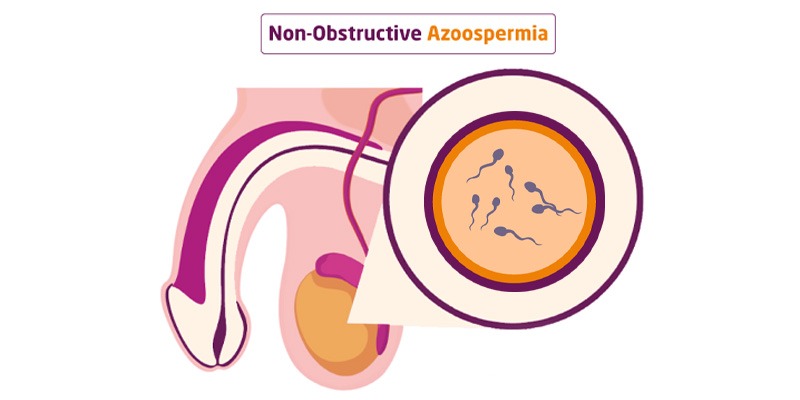Understanding Nonobstructive Azoospermia: Causes and Solutions
March 4, 2024
Parenthood is a dream many couples share. The journey to conceive can be exciting, but it can also present challenges along the way. One such challenge is nonobstructive azoospermia, a condition where the male partner produces no sperm in their semen. In this article, we will break down nonobstructive azoospermia, including its causes, diagnosis methods, and treatment options to help you navigate through this fertility issue.
Causes of Nonobstructive Azoospermia
Some of the common causes of nonobstructive azoospermia include:
- Hormonal Imbalances: Hormonal imbalances such as low levels of testosterone or high levels of follicle-stimulating hormone (FSH).
- Genetic Abnormalities: Genetic abnormalities such as Klinefelter syndrome or Y-chromosome microdeletions.
- Varicocele: A varicocele is a condition where the veins in the scrotum become enlarged, leading to decreased sperm production.
- Testicular Dysfunction: Conditions that impact testicular function, such as mumps orchitis, testicular trauma, or radiation therapy, can lead to nonobstructive azoospermia.
- Medications: Some medications, such as chemotherapy drugs or testosterone replacement therapy, can negatively impact sperm production.
Diagnosing Nonobstructive Azoospermia
The following male fertility tests are commonly used to diagnose nonobstructive azoospermia:
- Semen Analysis: A semen analysis is performed to evaluate the quality and quantity of sperm in the semen sample.
- Hormone Testing: Blood tests can assess hormone levels, including testosterone, FSH, and luteinising hormone (LH), to determine if there are any hormonal imbalances.
- Genetic Testing: Genetic testing may be recommended to identify any genetic abnormalities that could be causing nonobstructive azoospermia.
- Testicular Biopsy: In some cases, a testicular biopsy may be recommended to evaluate the presence or absence of sperm within the testicles.
Treatment Options for Nonobstructive Azoospermia
Treatment options for nonobstructive azoospermia depend on the underlying cause and individual circumstances.
- In some cases, addressing hormonal imbalances or treating underlying medical conditions may improve sperm production.
- However, for individuals with severe sperm production issues, assisted reproductive technologies such as in vitro fertilisation (IVF) or intracytoplasmic sperm injection may be recommended.
- In cases where nonobstructive azoospermia is a result of chemotherapy or radiation therapy, fertility preservation techniques such as sperm freezing before treatment can provide future options for conception.
In conclusion, nonobstructive azoospermia presents unique challenges in achieving pregnancy. However, with advancements in reproductive medicine and the expertise of fertility specialists at Apollo Fertility, there are viable treatment options available. If you or your partner are facing nonobstructive azoospermia, we encourage you to schedule a consultation with our experienced team to explore personalised solutions tailored to your needs.
Although nonobstructive azoospermia cannot always be cured, it is possible to find viable sperm for fertility treatments such as IVF procedure with assisted reproductive techniques.
Maintaining a healthy lifestyle, including regular exercise, a balanced diet, and avoiding excessive alcohol or tobacco use, can positively impact overall fertility.
Although nonobstructive azoospermia itself is not hereditary, certain genetic conditions contributing to the condition may have a hereditary component.